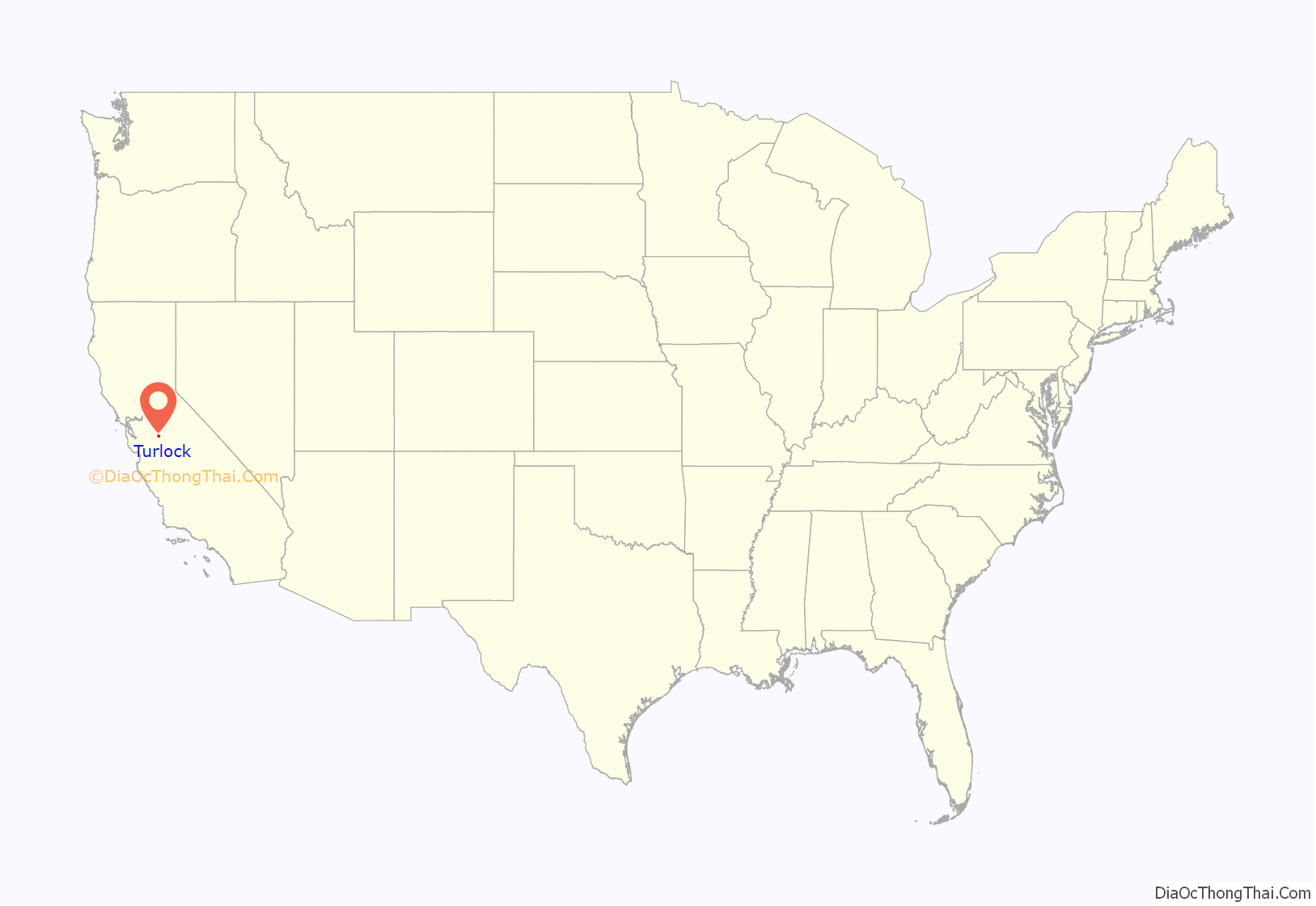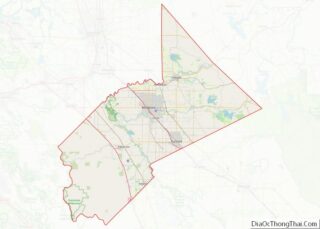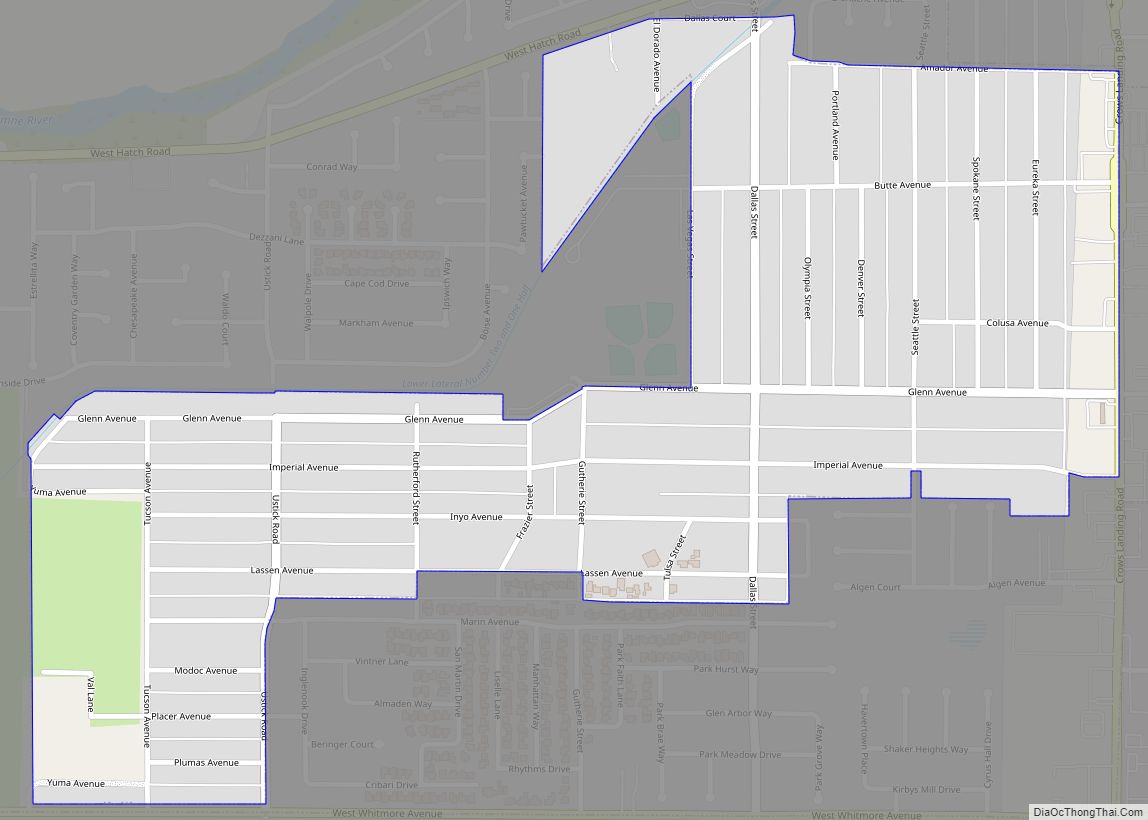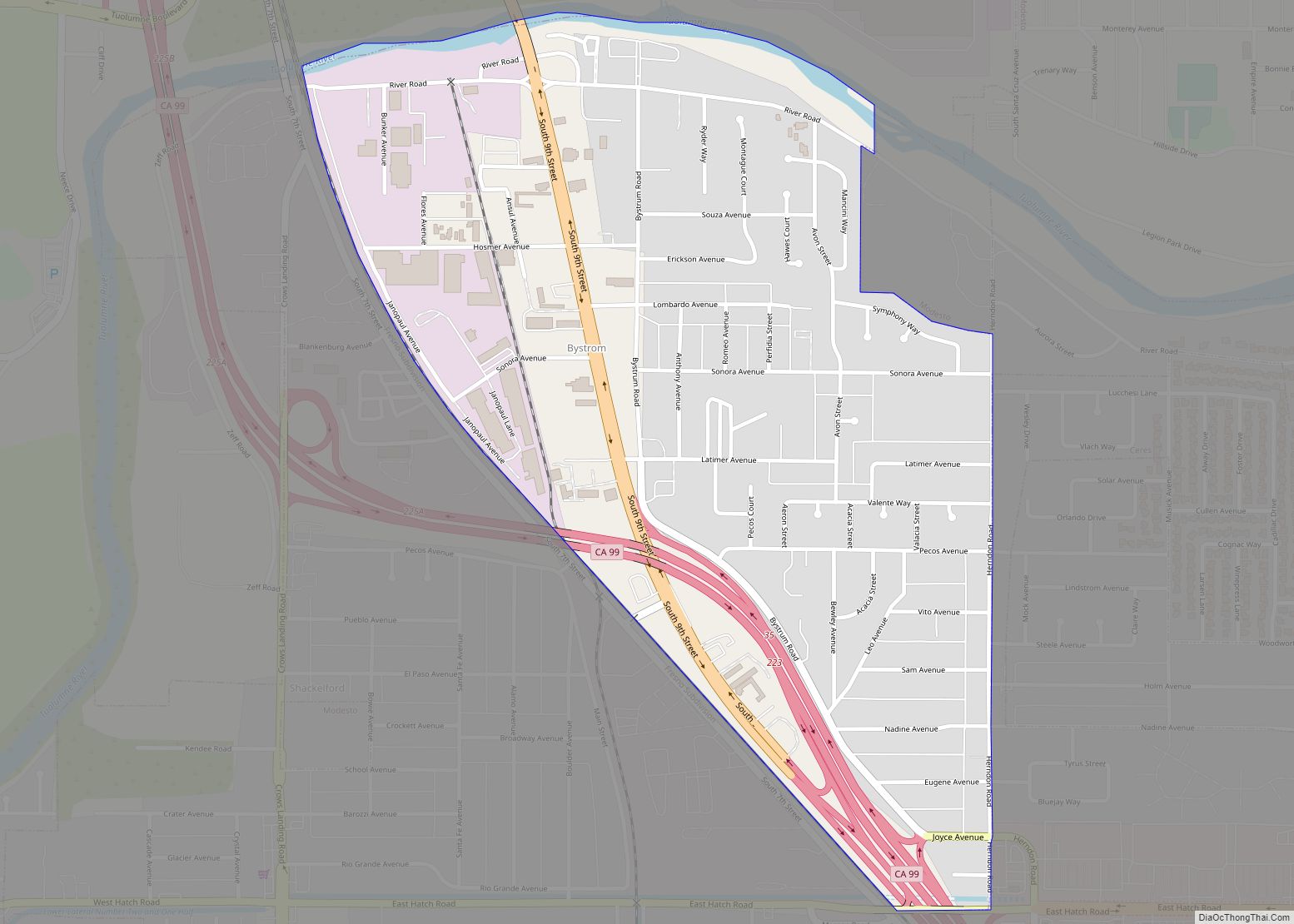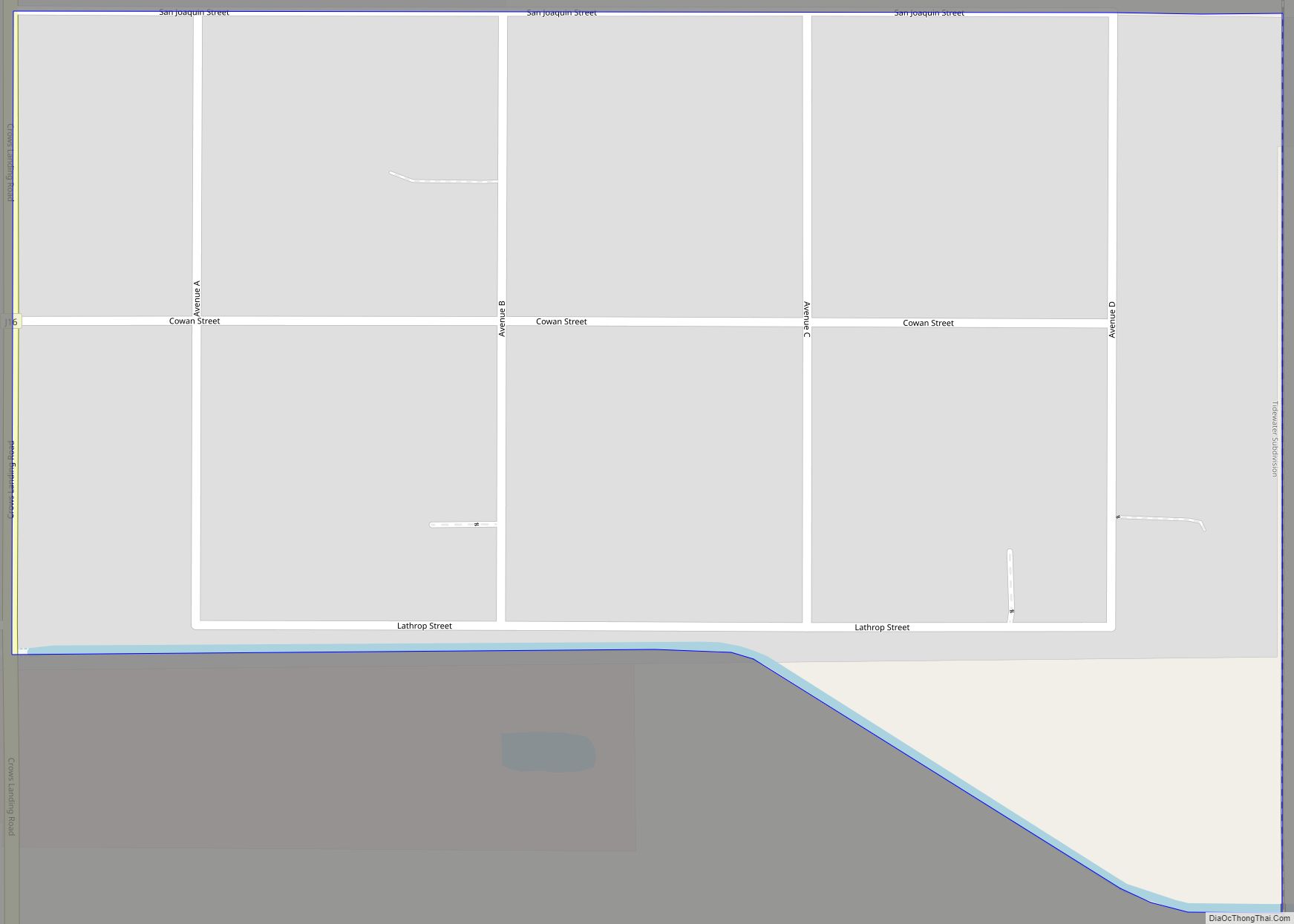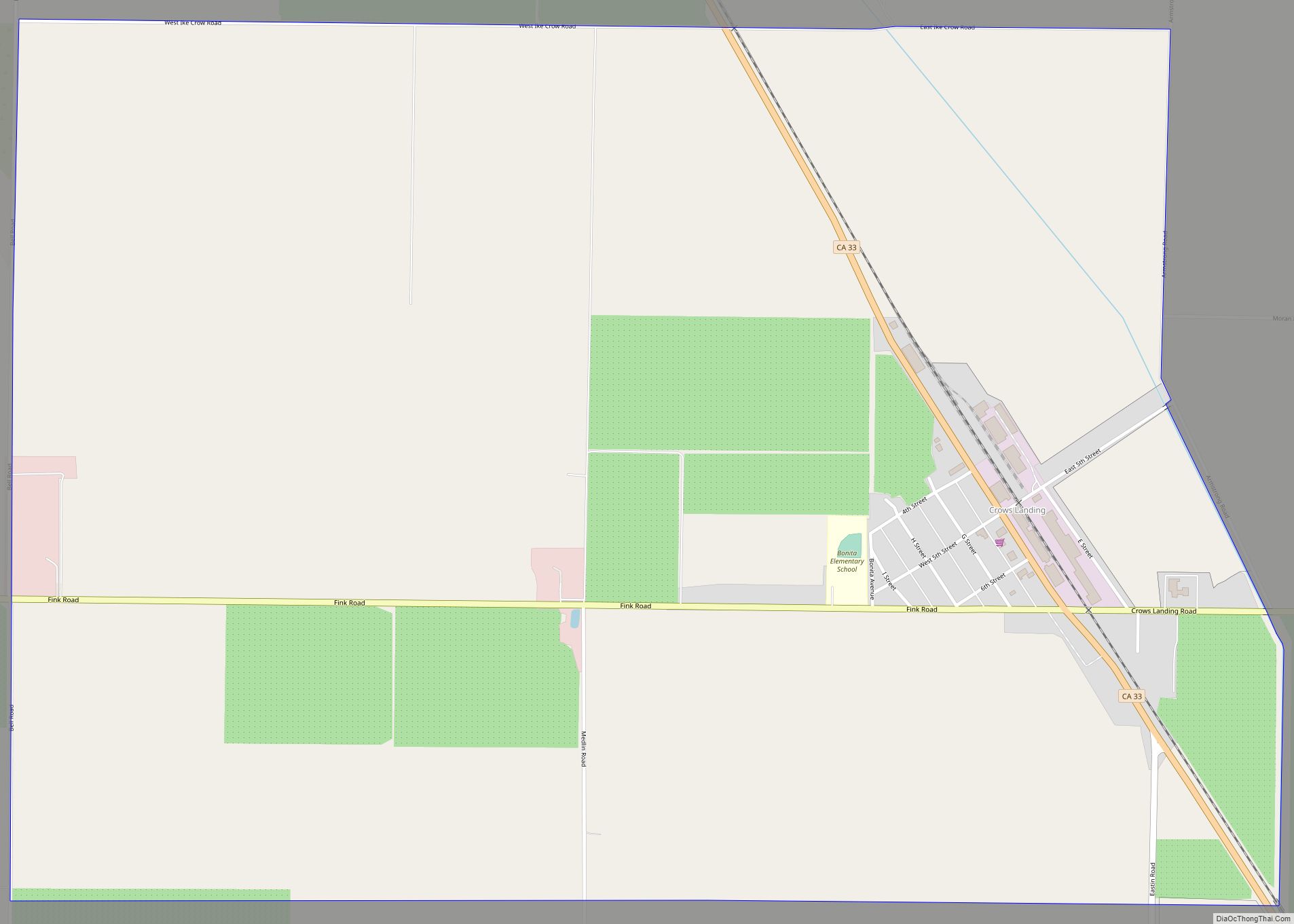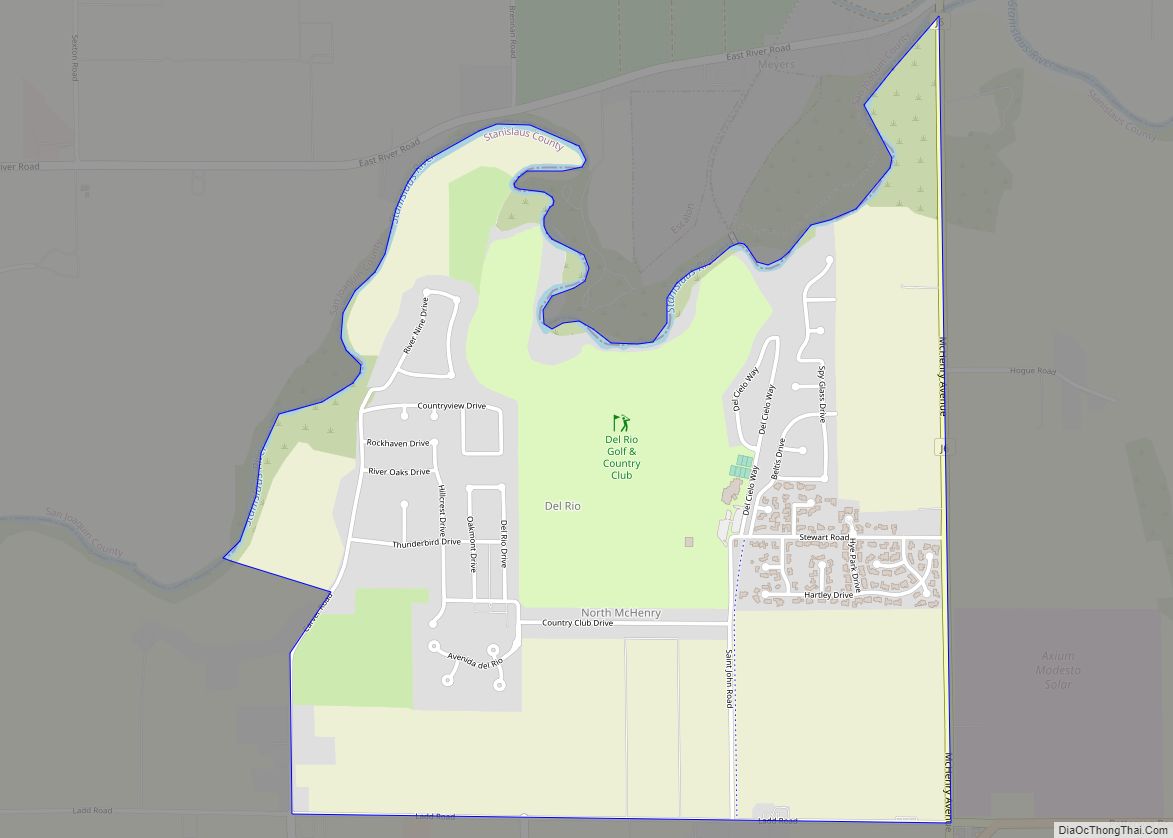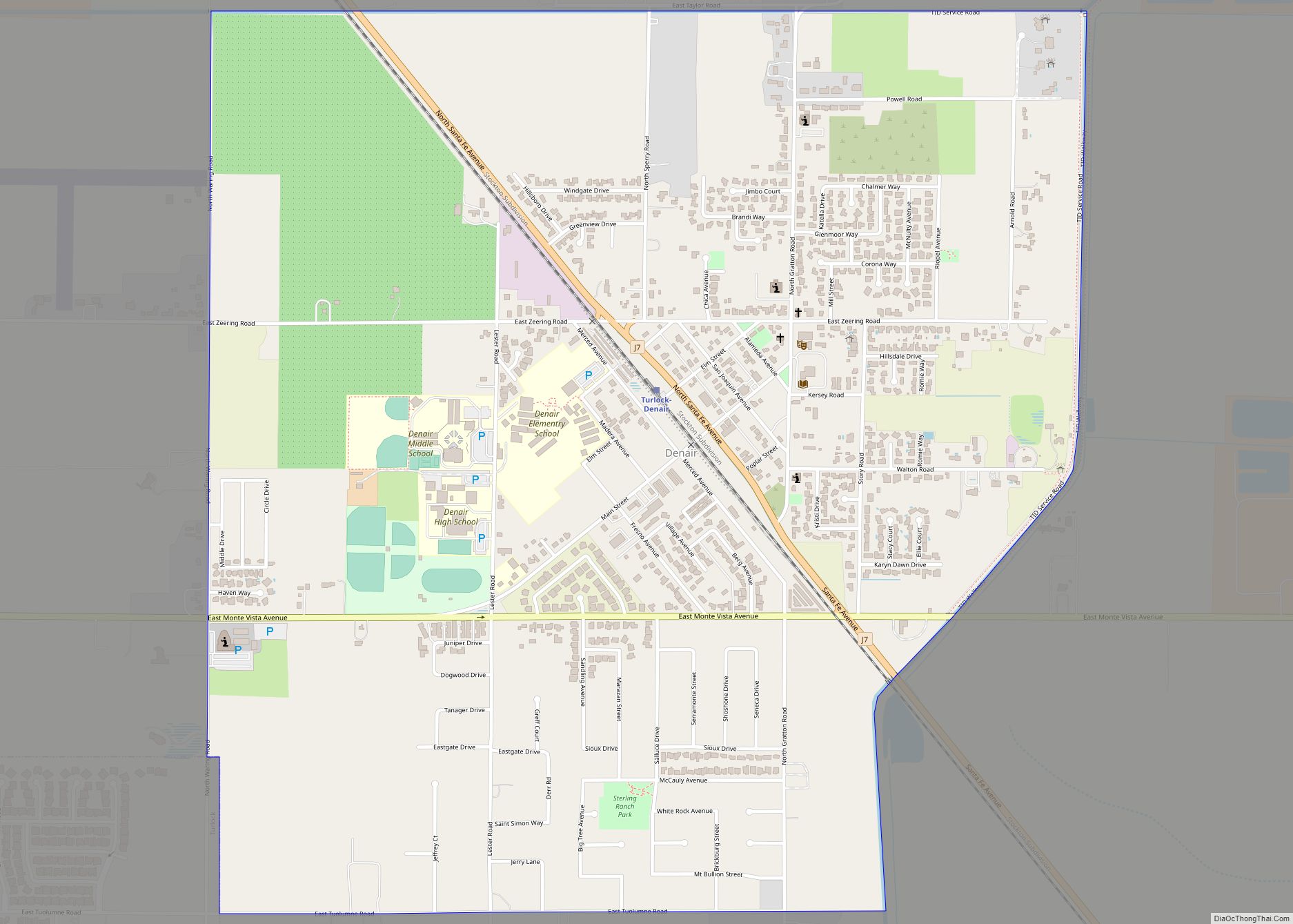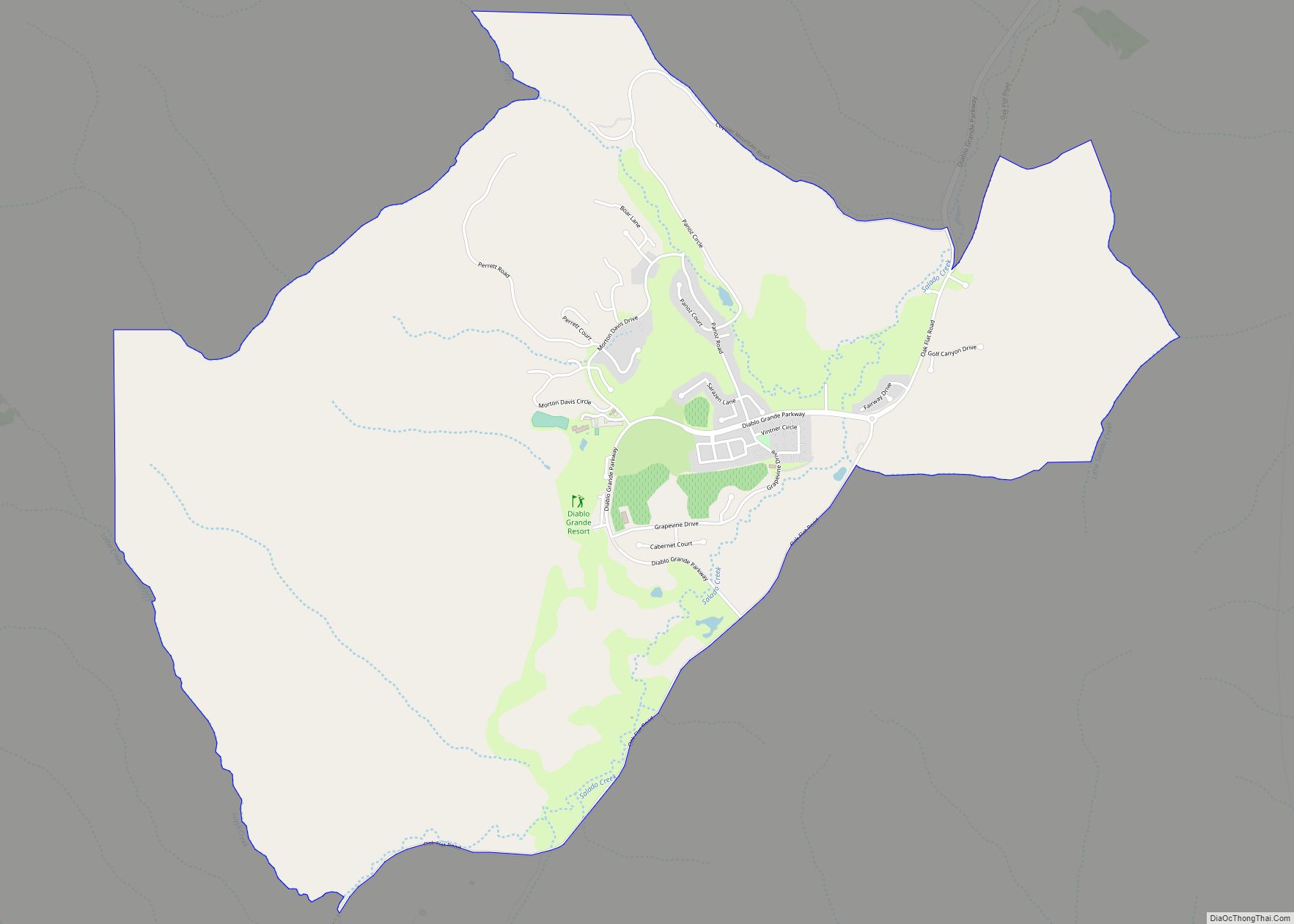Turlock is a city in Stanislaus County, California, United States. Its estimated 2019 population of 73,631 made it the second-largest city in Stanislaus County after Modesto.
| Name: | Turlock city |
|---|---|
| LSAD Code: | 25 |
| LSAD Description: | city (suffix) |
| State: | California |
| County: | Stanislaus County |
| Incorporated: | February 15, 1908 |
| Elevation: | 62 ft (31 m) |
| Total Area: | 16.93 sq mi (43.85 km²) |
| Land Area: | 16.91 sq mi (43.78 km²) |
| Water Area: | 0.03 sq mi (0.07 km²) 0% |
| Total Population: | 72,740 |
| Population Density: | 4,300/sq mi (1,700/km²) |
| ZIP code: | 95380–95382 |
| Area code: | 209 |
| FIPS code: | 0680812 |
| Website: | www.cityofturlock.org |
Online Interactive Map
Click on ![]() to view map in "full screen" mode.
to view map in "full screen" mode.
Turlock location map. Where is Turlock city?
History
Founded on December 22, 1871, by prominent grain farmer John William Mitchell, the town consisted of a post office, a depot, a grain warehouse and a few other buildings. Mitchell declined the honor of having the town named for himself. The name “Turlock” was then chosen instead. The name is believed to originate from the Irish village Turlough. In October 1870, Harper’s Weekly published an excerpt from English novelist James Payn’s story Bred in the Bone, which includes the mention of a town named “Turlough” (translated from Irish as “Turlock”). Local historians believe that the issue of Harper’s Weekly was read by early resident H.W. Lander, who suggested the alternate name.
Mitchell and his brother were successful businessmen, buying land and developing large herds of cattle and sheep that were sold to gold miners and others as they arrived. They were also leaders in wheat farming and cultivated tracts of land under the tenant system. Eventually, the Mitchells owned most of the area, over 100,000 acres, from Keyes to Atwater. In the early 20th century, 20-acre lots from the Mitchell estate were sold for $20 an acre.
While it grew to be a relatively prosperous and busy hub of activity throughout the end of the 19th century, it was not incorporated as a city until February 15, 1908. By that time intensive agricultural development surrounded most of the city (agriculture remains the major economic force in the region in current times). Many of the initial migrants to the region were Swedish. As an early San Francisco Chronicle article stated of the region and the community’s lacteal productivity, “you have to hand it to the Scandinavians for knowing how to run a dairy farm.”
Turlock went on to become known as the “Heart of the Valley” because of its agricultural production. With the boom came racial and labor strife. In July 1921, a mob of 150 white men evicted 60 Japanese cantaloupe pickers from rooming houses and ranches near Turlock, taking them and their belongings on trucks out of town. The white men claimed the Japanese were undercutting white workers by taking lower wages per crate of fruit picked. In protest, fruit growers briefly threatened not to hire the white workers behind the eviction, preferring to let melons rot on vines to hiring such characters. As a result of this stance, the eviction had the opposite effect of what the mob had intended. By August, Japanese workers had returned and, were nearly the only people employed to pick melons.
The affair gained national attention, and California Governor William Stephens vowed that justice would be served. Six men were quickly arrested but were apparently untroubled by the charges, stating that leaders of Turlock’s American Legion and Chamber of Commerce had told them that no trouble would come of their actions. Although a former Turlock night watchman testified that one of the accused had disclosed a plan “to clean up Turlock of the Japs,” all of the arrested were acquitted.
The editorial line of the San Francisco Chronicle opposed both the evictions and Japanese labor, with one column stating that “we in California are determined that Oriental workers shall be kept out of the state. But that does not mean that the decent citizens of California will tolerate for one moment such proceedings as the attack of a mob on the Japanese cantaloupe workers in the Turlock district.”
In 1930, Turlock’s population was 20% Assyrian. They were such a significant part of the population that the southern part of town even became referred to as Little Urmia, referring to the region of northwestern Iran from which most had come. In the 1930s, Turlock was cited by Ripley’s Believe It or Not as having the most churches per capita in the US, which had partly to do with the variety of ethnic churches established for the relatively small settler population. Various religious centers reflecting a diverse population, such as Sikh Gurdwaras, various Assyrian Christian churches, and many mainline Protestant, Mormon and Roman Catholic churches have been built.
During World War II, after the attack on Pearl Harbor, the US government placed Japanese Americans into concentration camps all over the country. The Stanislaus County Fairgrounds was the site of one of 15 temporary “assembly centers” and held 3,669 Japanese Americans, most of whom were US citizens. The US Army also built the Ballico Auxiliary Field (1942–1946) for training pilots in Turlock.
In 1960, California State University, Stanislaus, opened to students, helping to spur growth in the city as the university expanded in its early years. In the 1970s, State Route 99 (formerly U.S. Route 99) was completed through the area, largely bypassing the then-incorporated areas of Turlock in a route to the west of the city through mostly undeveloped land. Since that time, the city has grown westward considerably to meet the freeway’s north–south path, but urban development west of the freeway has only recently begun to take hold. In an attempt to allow for orderly growth of the city, comprehensive growth master plans have established urban growth boundaries since the 1960s.
Turlock experienced extensive growth of both residential and commercial areas in the 1980s, following a statewide boom in housing demand and construction. The housing boom of the 1980s diminished in the early 1990s but increased again in the second half of the decade, partly as a result of San Francisco Bay Area growth, which placed a higher demand for more affordable housing in outlying areas. After the dot-com bust, housing demand intensified, producing higher house prices in an area formerly known for affordable housing. A recent boom in the retail sector has produced considerable growth along the Highway 99 corridor. The city reached its northern urban growth boundary, Taylor Road, in the late 1990s, and growth beyond it is restricted by the city’s Master Plan.
Turlock Road Map
Turlock city Satellite Map
Geography
Turlock is located in Stanislaus County, between the cities of Modesto and Merced, at the intersection of State Route 99 and State Route 165.
According to the United States Census Bureau, the town has a total area of 16.9 square miles (44 km), all of it land.
Climate
Turlock has hot, mostly dry summers and cool, wet winters. Average January temperatures are a maximum of 53.7 °F (12.1 °C) and a minimum of 38.1 °F (3.4 °C). Average July temperatures are a maximum of 104.4 °F (40.2 °C) and a minimum of 62.6 °F (17.0 °C). There are an average of 78.0 days with highs of 90 °F (32 °C) or higher and an average of 19.8 days with lows of 32 °F (0 °C) or lower. The record high temperature was 114 °F (46 °C) on July 9, 1896. The record low temperature was 18 °F (−8 °C) on January 21, 1922, and December 19, 1924.
The average annual precipitation is 11.88 inches (302 mm). There are an average of 48 days with measurable precipitation. The wettest year was 1983 with 27.03 inches (687 mm) and the dryest year was 1953 with 5.32 inches (135 mm). The most precipitation in one month was 8.47 inches (215 mm) in February 1998. The most precipitation in 24 hours was 2.70 inches (69 mm) on December 11, 1906. Although snow is very rare in Turlock, 3.0 inches (76 mm) fell in January 1922 and 2.0 inches (51 mm) fell in February 1976.
See also
Map of California State and its subdivision:- Alameda
- Alpine
- Amador
- Butte
- Calaveras
- Colusa
- Contra Costa
- Del Norte
- El Dorado
- Fresno
- Glenn
- Humboldt
- Imperial
- Inyo
- Kern
- Kings
- Lake
- Lassen
- Los Angeles
- Madera
- Marin
- Mariposa
- Mendocino
- Merced
- Modoc
- Mono
- Monterey
- Napa
- Nevada
- Orange
- Placer
- Plumas
- Riverside
- Sacramento
- San Benito
- San Bernardino
- San Diego
- San Francisco
- San Joaquin
- San Luis Obispo
- San Mateo
- Santa Barbara
- Santa Clara
- Santa Cruz
- Shasta
- Sierra
- Siskiyou
- Solano
- Sonoma
- Stanislaus
- Sutter
- Tehama
- Trinity
- Tulare
- Tuolumne
- Ventura
- Yolo
- Yuba
- Alabama
- Alaska
- Arizona
- Arkansas
- California
- Colorado
- Connecticut
- Delaware
- District of Columbia
- Florida
- Georgia
- Hawaii
- Idaho
- Illinois
- Indiana
- Iowa
- Kansas
- Kentucky
- Louisiana
- Maine
- Maryland
- Massachusetts
- Michigan
- Minnesota
- Mississippi
- Missouri
- Montana
- Nebraska
- Nevada
- New Hampshire
- New Jersey
- New Mexico
- New York
- North Carolina
- North Dakota
- Ohio
- Oklahoma
- Oregon
- Pennsylvania
- Rhode Island
- South Carolina
- South Dakota
- Tennessee
- Texas
- Utah
- Vermont
- Virginia
- Washington
- West Virginia
- Wisconsin
- Wyoming
